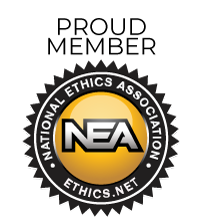Planning for Long-Term Care in Retirement
As you approach retirement, the prospect of healthcare needs becomes increasingly significant. Long-term care insurance emerges as a crucial component of comprehensive retirement planning, offering financial protection against the potential impact of escalating healthcare costs on retirement savings.
Mitigating the Risk of High Healthcare Costs
Long-term care insurance is designed to address the costs associated with extended medical care, particularly for services not covered by traditional health insurance or Medicare. This includes assistance with activities of daily living, such as bathing, dressing, and managing medications.
Preserving Retirement Savings
Healthcare expenses, especially those related to long-term care, can deplete retirement savings rapidly. Long-term care insurance acts as a safeguard, allowing you to protect your hard-earned savings from being eroded by the high costs of medical care.
Providing Financial Security for Spouses and Beneficiaries
The financial implications of long-term care extend beyond the individual to impact spouses and beneficiaries. Long-term care insurance ensures that the financial burden does not fall solely on you and/or your family, providing security and reassurance for loved ones.
Maintaining Independence and Quality of Life
Access to long-term care services can contribute significantly to maintaining independence and quality of life during retirement. With insurance in place, you will be able to receive the necessary care in a setting of your choice, whether at home, in an assisted living facility, or in a nursing home.
Addressing the Limitations of Medicare
While Medicare covers certain medical expenses, it has limitations when it comes to long-term care. Long-term care insurance fills this gap, ensuring that you have the means to access the care you need without relying solely on Medicare.
Tailoring Coverage to Individual Needs
Long-term care insurance policies can be tailored to meet individual needs and preferences. You can choose coverage options that align with your health, financial situation, and desired level of care, providing flexibility and customization in your insurance plans.
Securing Coverage While Healthy
Obtaining long-term care insurance is more feasible when individuals are healthy. Waiting until health concerns arise may limit the availability of coverage or result in higher premiums. Securing insurance early allows you to plan proactively for potential future needs.
By addressing the financial challenges associated with extended healthcare needs, you may be able to safeguard your savings, maintain financial independence, and ensure a higher quality of life during your later years. Call us to discuss these issues in more detail, and we can help you decide on a plan that suits your hopes and expectations for the future.


QUICK LINKS
QUICK LINKS
Securities offered through CreativeOne Securities, LLC Member FINRA/SIPC. Retirement Advisers and CreativeOne Securities, LLC are not affiliated.
Licensed to sell insurance in the following States: MA, RI, CT, and ME.
Licensed Insurance Professional. We are an independent financial services firm helping individuals create retirement strategies using a variety of investment and insurance products to custom suit their needs and objectives. This material has been prepared for informational and educational purposes only. It is not intended to provide, and should not be relied upon for, accounting, legal, tax or investment advice. 20562 - 2020/11/4
Investing involves risk, including the loss of principal. No Investment strategy can guarantee a profit or protect against loss in a period of declining values. Any references to protection benefits or lifetime income generally refer to fixed insurance products, never securities or investment products. Insurance and annuity products are backed by the financial strength and claims-paying ability of the issuing insurance company.
Securities offered through CreativeOne Securities, LLC Member FINRA/SIPC. Retirement Advisers and CreativeOne Securities, LLC are not affiliated.
Licensed to sell insurance in the following States: MA, RI, CT, and ME.
Licensed Insurance Professional. We are an independent financial services firm helping individuals create retirement strategies using a variety of investment and insurance products to custom suit their needs and objectives. This material has been prepared for informational and educational purposes only. It is not intended to provide, and should not be relied upon for, accounting, legal, tax or investment advice. 20562 - 2020/11/4
Investing involves risk, including the loss of principal. No Investment strategy can guarantee a profit or protect against loss in a period of declining values. Any references to protection benefits or lifetime income generally refer to fixed insurance products, never securities or investment products. Insurance and annuity products are backed by the financial strength and claims-paying ability of the issuing insurance company.


